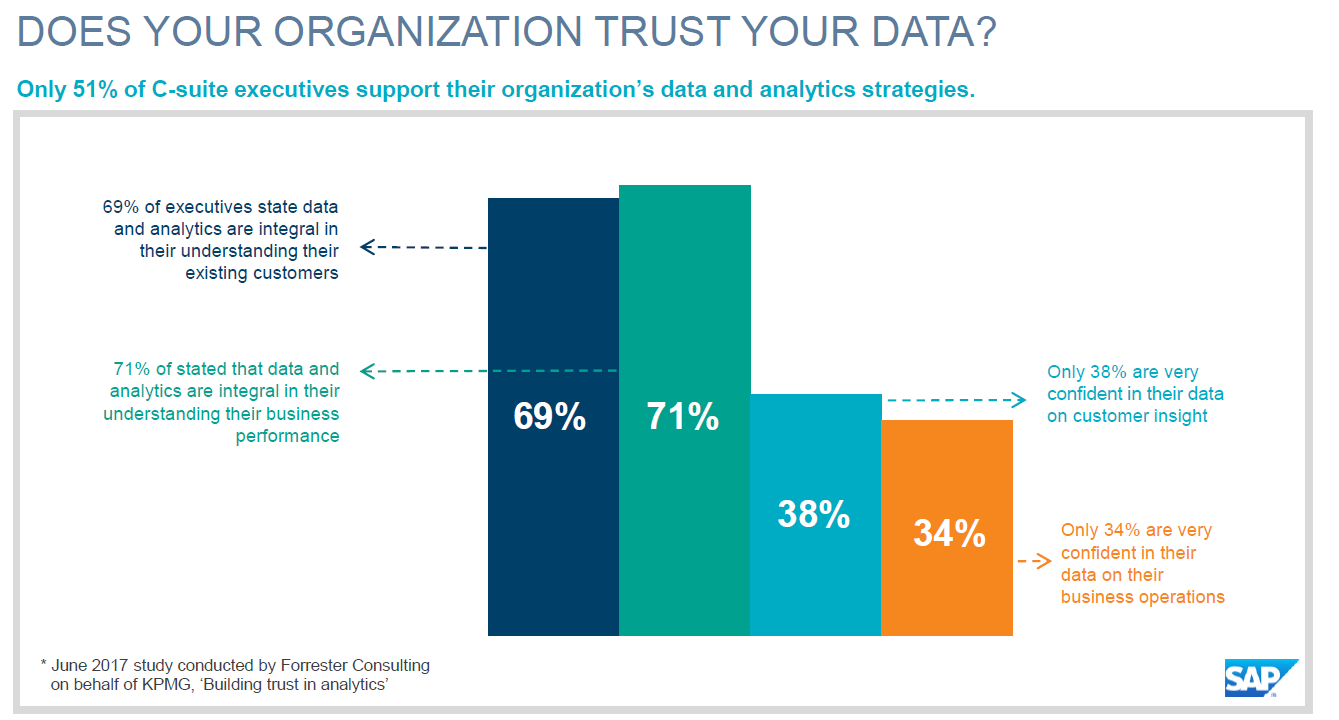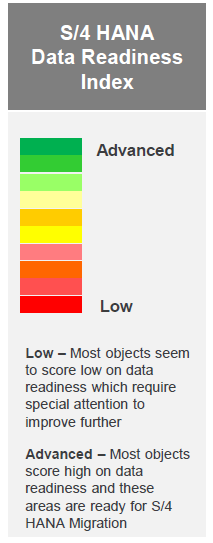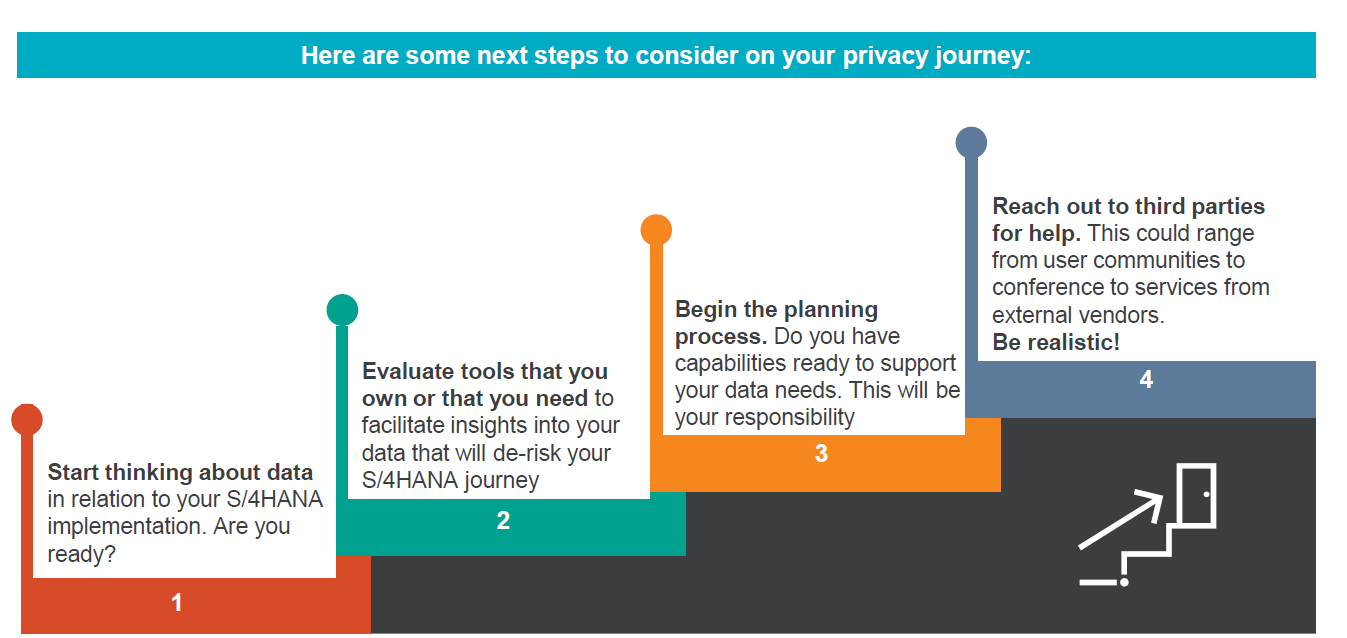In getting ready for an SAP S/4HANA implementation, it’s all about the data. When organizations start the journey to SAP’s “Intelligent Enterprise” by embarking on their S/4HANA implementations, data readiness is a foundational element. We like to say there are four steps to an S/4HANA data lifecycle, starting with the all-important first step: understanding the current data environment. In a recent webinar we conducted, and in this blog post, we’ll focus only on this first step: Data Readiness. Getting the data defined and cleaned is imperative to a successful implementation. As Rick Smith, who is with SAP’s Platform and Technology Center of Excellence, said during our webinar, “you don’t want to move bad data over” when upgrading to S/4HANA.
Data is the very lifeblood of an organization’s operational systems and therefore, it’s absolutely critical that data be cared for and maintained, and that those responsible for the data understand what the business needs for that information is and what it will be used for going forward. There are several important steps to understanding the current environment:
- Analyze data currently being used
- Are there issues with this data?
- Analyze what reports are currently being used
- What reports will still be needed post-go live?
- Analyze challenges with data and reporting that S/4HANA will help resolve.
In that recent webinar, we asked attendees how confident they were in the quality of their current SAP data. Absolutely no one selected “very confident!” Sixty-six percent said they were only “moderately confident,” while the remaining third of the audience reported “low confidence.” Those numbers were similar to results in a 2017 study that addressed the gap between the business and the data – while C-level executives have high expectations about using data to drive their organizations’ objectives, they actually have very low (about a third) confidence in relying on the data to drive business operations.

Time and again, we have worked with clients who assume that data from their legacy systems must be correct because they’re currently using that data to run their business. The reality often couldn’t be farther from that belief. Data, just like life, is constantly moving – fused, changed, organizations merge or divest, data pipelines break, interfaces change and people leave taking contextual knowledge with them. So please don’t assume that current data is clean data.
The Data Readiness Assessment
What’s an organization to do? Protiviti has developed a comprehensive data readiness assessment that helps eliminate data uncertainties at the earliest stages of the project, setting the stage for accurate planning and seamless execution during the implementation. The data readiness assessment looks at master data from the perspective of the processes that really matter to the organization. The assessment also identifies opportunities to eliminate bad data and ensures that highly efficient, predictable processes are in place, leading to clearly defined sources of data and business rules. We also help define data stewardship, outlining who in the organization is responsible for data quality and accuracy. Perhaps most importantly, we help the organization recognize that eliminating bad data is a never-ending process and support the development of a strong governance process that continually assesses and reviews, reduces and eliminates that bad data.

Our Data Readiness Index has proven to be a helpful visualization to look at data readiness from a process standpoint. While it can appear overwhelming, we take things one step at a time reviewing master domains such as fixed assets, project systems, financial accounting, supply chain, etc. By doing that, organizations begin to see where they “score” on the index – a low score requires more attention, while an advanced ranking gives the green light to move forward, significantly de-risking the migration. When organizations are taking on a complex effort like an S/4HANA migration and standing up S/4HANA as their new digital core, data readiness index scores in the lower range of this chart likely suggest that “we’re going to have some trouble with this project and it’s going to be caused by data.”
There are, of course, a number of key activities that factor into the data readiness assessment, and we are only touching on highlights here. The bottom line is: the organization learns, via tangible report card, what data mapping and conversion preparation will be required. We use a data design view to map master data elements back to the processes and develop a model as to what kind of data will need to be reviewed. We also assess the data extraction methods and develop implementation plans based on the what makes the most sense to each individual organization. With a high-level architecture and data plan flow in place, the organization can integrate data from any source systems into a standard data model for analysis and visualization and accurately estimate the level of effort to complete this phase.
What’s Next?

The SAP S/4HANA Journey is just that – a phased approach to making the most of the powerful solutions SAP provides. Consider data readiness to be the next step after Phase Zero during the important pre-implementation planning. Taking the right next steps will make the journey a win-win.
Visit Protiviti’s SAP consulting services page for more information on our solutions.






